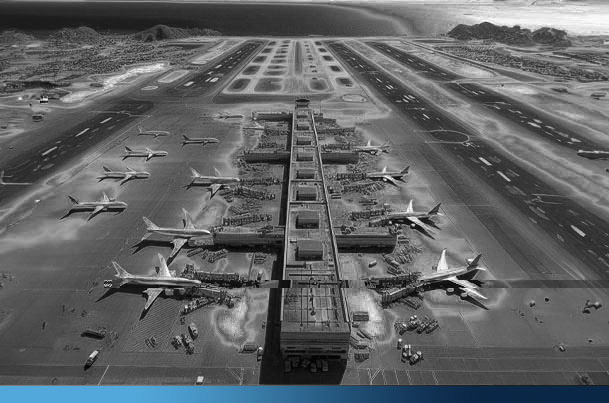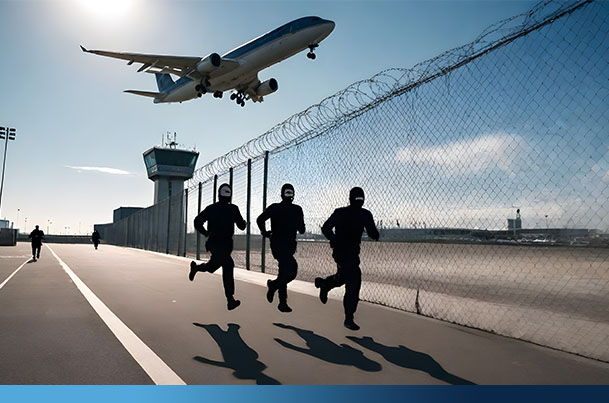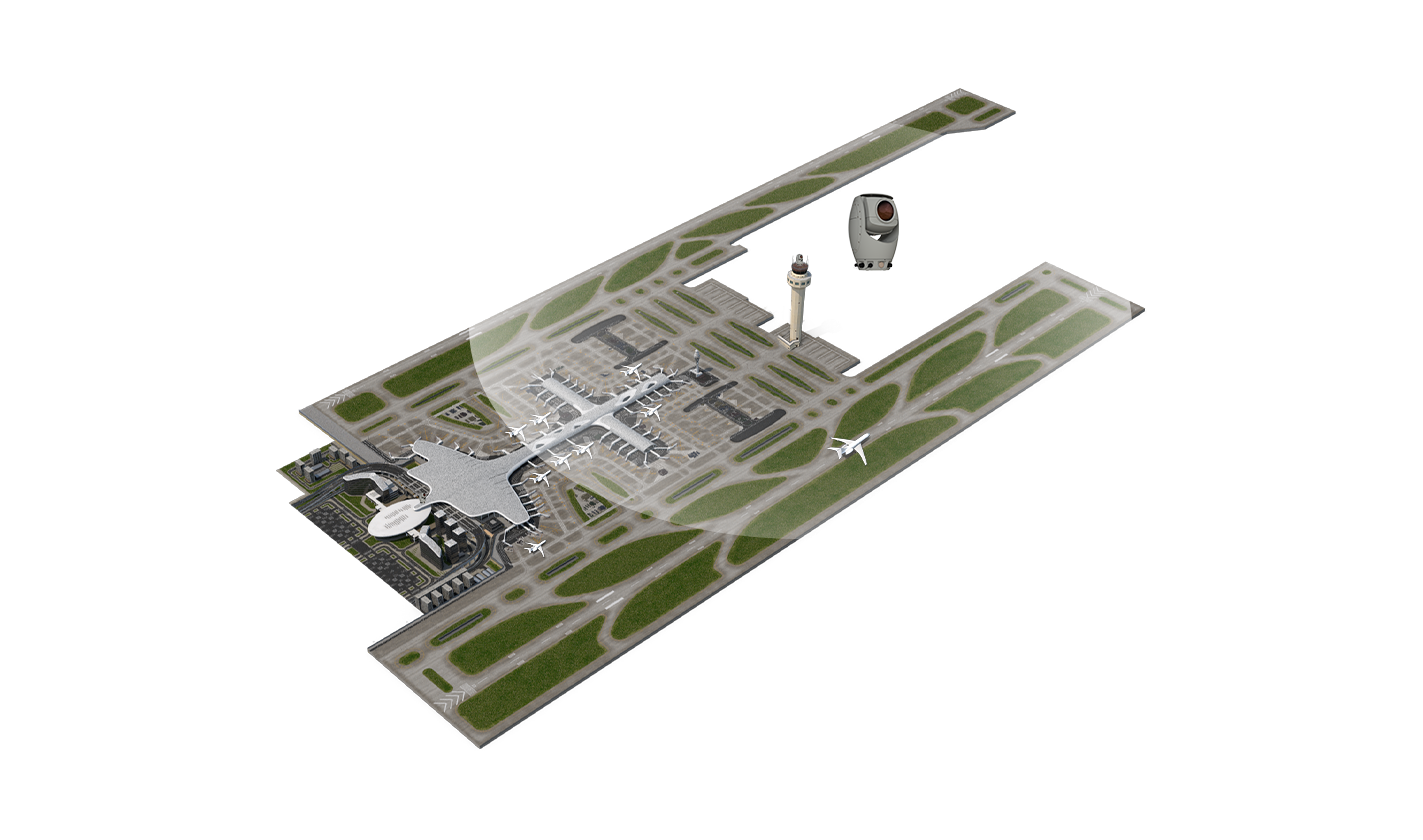- Home
- Was
- Security Applications
- Airport Surveillance
AIRPORT SURVEILLANCEWith 360° thermal imaging technology
How to improve the Airport Surveillance?
Airport security covers a multitude of critical issues, from air traffic monitoring to the protection of the perimeter. With threats constantly evolving, security managers need advanced surveillance solutions, not only to prevent intrusions and unlawful acts, but also to minimize air disruptions and maximize risk mitigation.
Airport Surveillance: Main Challenges



Perimeter Security Protection
Airports have long perimeters traditionally secured by physical fences. Employing perimeter intrusion detection systems (PIDS) is essential for detecting and identifying potential threats within airport grounds.
Protection of outdoor critical areas
Airports face new challenges in safeguarding outdoor critical areas, including tarmac, runways, parking, hangars and terminals, marked by virtual boundaries. Addressing these challenges requires innovative solutions to ensure comprehensive security within these delineated zones.
Traffic Management
Comprehensive oversight of vital traffic components, including workers, animals, vehicles, and aircraft, necessitating a robust and adaptive security approach.
Detection of low flying object and wildlife
With the rise of airborne objects near airports, such as civilian drones and wildlife, airports must devise solutions to mitigate the risk of collisions. Implementing measures to detect and deter these potential hazards is crucial for ensuring aviation safety in proximity to airport facilities
Operational Integration
Seamless integration with a Common Operational Picture (COP) workstation and display, ensuring a unified and real-time overview for enhanced operational control and decision-making.
Limitation of civil work and continuity of service
Civil works and installation of equipment on airport landing and perimeter areas can pose challenges, potentially necessitating to stop the air traffic.
Airport Surveillance: Main Threats


Intruders on the tarmac
Unauthorized individuals or vehicles can gain access to runways or hangars, endangering not only ground staff but also aircraft taking off or landing. These intrusions can come from people with malicious intentions or simply disorientated.
Potentially dangerous aircraft
Certain aircraft or seemingly harmless flying objects pose significant security risks to airports and aircraft safety. Vigilance and advanced detection mechanisms are essential for identifying and mitigating potential threats before they escalate.
Unmanned aerial vehicles (drones)
Drones can be used for a number of illicit purposes (illegal surveillance, smuggling, direct attacks…). Their small size makes them difficult to detect using traditional surveillance methods.
Airport Surveillance Solution
With Spynel Panoramic Infrared Cameras


HGH Infrared Systems has developed an innovative panoramic solution detecting and categorizing long-range threats. The SPYNEL infrared camera range protects any kind of critical infrastructures or military assets thanks to a 360° camera. Fully passive, the SPYNEL camera ensures real-time panoramic video and automatic detection, classification & tracking.
How to secure your Airport?

Why Choosing Spynel for Airport Surveillance?
360-Degree Visibility
Panoramic infrared cameras provide a comprehensive 360-degree field of view, eliminating blind spots and enabling exhaustive surveillance coverage across airport perimeters, runways, and critical access points.
Limited civil work
Implementing our solution atop the control tower minimizes civil engineering efforts while monitoring the entire perimeter.
Night Vision Capability
Infrared technology equips these cameras with exceptional night vision capabilities, ensuring continuous surveillance even in low-light conditions. This is crucial for maintaining security during non-daylight hours.
Thermal Imaging Precision
The integration of thermal imaging technology enhances detection capabilities, allowing the identification of heat signatures. This proves invaluable in identifying potential security threats, such as intruders or unattended aircraft.
Wide-Area Monitoring
Panoramic cameras are adept at monitoring large areas with a single device, reducing the need for multiple cameras and associated infrastructure. This not only simplifies system management but also optimizes cost-effectiveness.
Real-Time Situational Awareness
The ability to capture and analyze panoramic views in real-time enhances situational awareness. This is particularly critical in airport environments where swift and informed responses to potential security incidents are paramount
Reliability in Challenging Conditions
These cameras are designed to withstand challenging environmental conditions, including extreme temperatures and inclement weather. This robustness ensures continuous operation, contributing to the overall resilience of airport security infrastructure.
Automatic Detection and Classification with AI
The Cyclope software automatically analyzes thermal data to detect, classify and track threats, thereby reducing the need for constant human surveillance.
Easy Interfacing with third-part systems
Cyclope is the software associated with HGH Infrared System’s SPYNEL series of panoramic infrared cameras, and it is designed to provide advanced image analysis and tracking capabilities. The ease of integrating Cyclope, through ONVIF protocol, into existing surveillance systems such as Video Management Software (VMS) enables to easily export information such as video thumbnails or alarm data to another videosurveillance software









